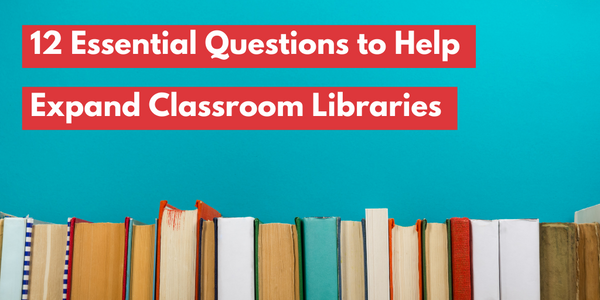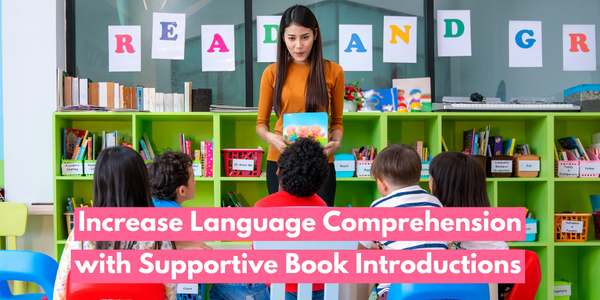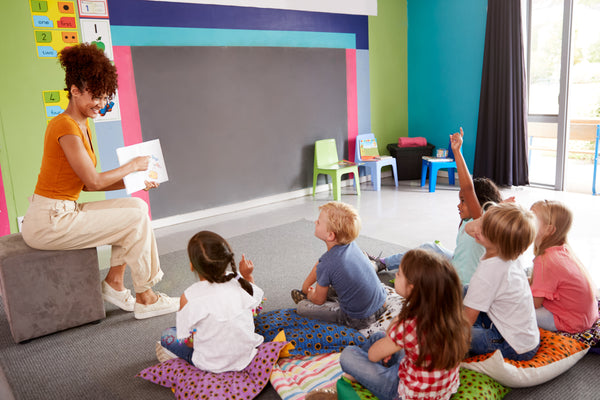Editor's Note: This blog was previously published, we're re-sharing it today during the Holiday season.
By Susan Weaver Jones, Reading Specialist, Guest Blogger
Have you ever wondered if it's possible to teach your students enough vocabulary that it can help them become independent readers? The students' seemingly endless task of learning hundreds of thousands of words is not far removed from the teacher's daunting responsibility of selecting the most essential vocabulary for instruction. Keep reading to learn how to introduce fiction books to struggling readers, I'll also share recommendations on how to excite your students about additional text types.
When I visited my elementary school library as a kid, a big unabridged dictionary stood prominently on its own stand. I remember being amazed by the sheer size of the book. I wondered how many words were inside and whether it was possible to learn all of the words on so many pages.
Second grade students usually have learned about 6,000 root word meanings by the end of the school year (Biemiller, 2005). They learn approximately 1,000 word meanings each additional year, depending on how much they read. If students had to rely on their teachers as the sole means through which they learn new words and meanings, they would be limited to acquiring only several hundred words a year through direct instruction (Stahl, 1999).

.
In second grade, teachers are likely to have students with a wide range of reading abilities. While some are well on their way to becoming fluent readers already, there may be struggling readers who are in the early stages of learning to use critical reading skills. There are also English language learners who may not be able to fluently read a language that is different than what is spoken in their homes. The word gap of known and unknown words between striving and fluent readers affects their progress in listening, speaking, reading, and writing, even in second grade.
The English language contains close to a million words; that includes multiple meanings, inflections, numerical value, technical implications, and many other subcategories of language ( Oxford English Dictionary , 1989). The number of words that can be taught through direct instruction, as valuable as it is, is only a small fraction of the number of words available for students to learn. Fortunately, direct instruction is only one method through which we can help students improve vocabulary
Students who have acquired a large vocabulary tend to learn new words faster than students who lack extensive word knowledge, which further increases the word gap (Hart & Risley, 1995). In addition to different levels of reading ability, students bring a wide range of background knowledge to school, which is based upon their personal experiences. To help mitigate the effect of these differences, we can use fiction books as a means to tap into valuable prior information, focus on important concepts, and introduce key vocabulary (Collins, 2005).
Improving Vocabulary and Oral Language Development

One type of book that is especially helpful for encouraging vocabulary and oral language development is the use of wordless books. This type of resource uses illustrations or photographs to depict stories without text, which is a great way for children to use images as evidence to talk about what is happening. Students have the opportunity to express their ideas aloud and to listen to other children describe the same stories with different wordings and possibly various interpretations, which can prompt deeper discussion in guided reading groups. Once unknown words become familiar, students can use them to broaden their reading and writing vocabularies (Wegener, 2017).

Pairing to Make Real World Connections
You can also create a bridge for students to appreciate a topic presented in fiction books by pairing the texts with nonfiction books for kids. When students have background knowledge of topics they identify in wordless or fiction books, they will be better prepared to appreciate those topics in related informational books. Students will already be familiar with some of the relevant words and ideas likely to be revisited and expanded upon in nonfiction texts (Neuman & Wright, 2013).
You can pair wordless picture books with narrative texts to strengthen vocabulary and learn concepts related to the topic. Depending on the reading abilities of the students, you can use these for reading aloud and as guiding reading books. Many students are familiar with the sequence of events characteristic of narrative texts because the sequence of events is similar to how events would occur in real life. Fiction books could also be a resource to improve writing skills because students pull key vocabulary from the books to include in their own stories and descriptions when they are retelling.

The repeated exposure to key words in both text types will assist students' comprehension of the new vocabulary (Nagy, Anderson, & Herman, 1987; Shu, Anderson, & Zang, 1995). For second grade readers who are ready for additional challenges, you should use paired texts that are available at higher reading levels. Hameray's Fables and the Real World collection links retold fables with three informational books that strengthen students' understanding of elements within the traditional tales.
By capitalizing on similar concepts, you will be able to help students make real-world connections. You can create additional fiction and nonfiction pairings by using school and classroom library books, leveled readers for guided reading, or even books from yard sales that pertain to topics that meet the needs of students and your curriculum.
In addition to the advantage of learning about a topic through a variety of texts, your students will have better access to reading comprehension practice. As students build confidence with listening, speaking, reading, and writing, they will enjoy practicing and broadening their language abilities because literacy will become an asset, rather than a chore. Students who once struggled with reading will inevitably develop a love of reading.
Why is a love of reading significant for second grade students? As second grade students prepare for third grade, they will encounter more content-area material for which they will be responsible to read and understand. With each grade comes the expectation that your students will be able to read and write about more complex fiction and nonfiction texts with increasing frequency.
In some states, third grade students are tested to determine if their reading comprehension skills are sufficient to be promoted to the next grade. If students do not pass the proficiency tests, they can be retained (Lu, 2013). Whether or not your state relies on official tests to gauge reading proficiency, the reading materials you select should help students meet the academic demands of the subsequent year. This is important because content areas, such as science, social studies, and even math, rely on reading and writing to communicate and interpret information, especially on state-mandated summative assessments!
Proficiency in any skill requires consistent practice with guidance from a teacher like you! Your students will benefit from guided reading lessons, but the way kids will consistently apply what they learn will be through the act of reading. Students need to read frequently, they need access to books that interest them, and they need to be exposed to different genres. The gains students can make from incidental reading of fiction books will accumulate quickly and significantly over the years to come. This will undoubtedly lead to a love of reading that will last a lifetime.
Be sure to continue checking back for more ideas to help your students on the Hameray blog !
~~~
 Susan is an elementary educator from Orlando, Florida, who currently works as an ESL teacher in Knoxville, Tennessee. She has taught students in kindergarten through eighth grade as a Classroom Teacher, Reading Specialist, Reading Recovery Teacher, and Literacy Coach. She is also the author of several leveled readers in the
Kaleidoscope Collection
. If you like what you read here, be sure to read
more by Susan on our blog
.
Susan is an elementary educator from Orlando, Florida, who currently works as an ESL teacher in Knoxville, Tennessee. She has taught students in kindergarten through eighth grade as a Classroom Teacher, Reading Specialist, Reading Recovery Teacher, and Literacy Coach. She is also the author of several leveled readers in the
Kaleidoscope Collection
. If you like what you read here, be sure to read
more by Susan on our blog
.
~~~





